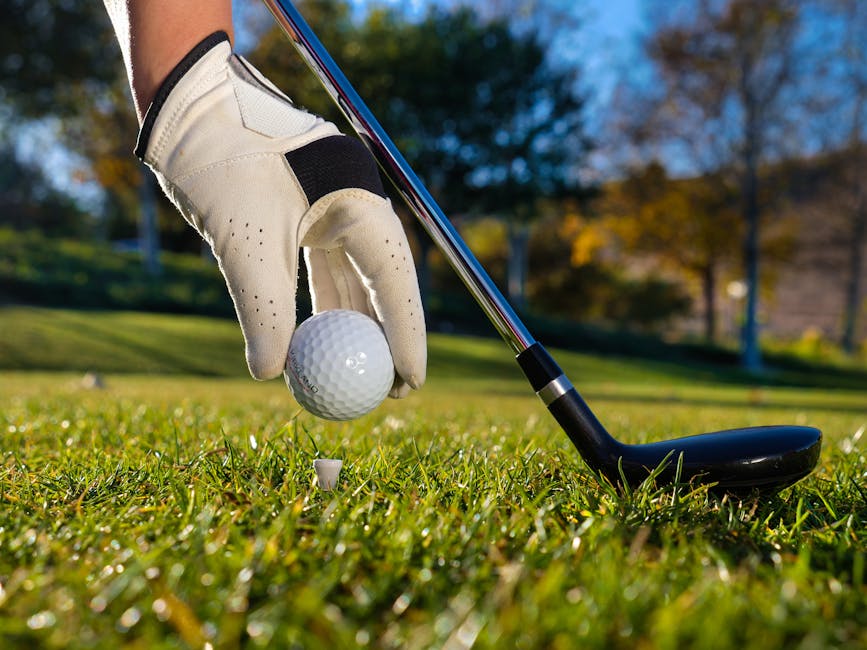Perfect Your Swing: A Beginner’s Guide to Golf Gripping
Embarking on the journey of golf can be both exhilarating and daunting. As a beginner, understanding the fundamentals is crucial, with gripping being one of the cornerstone skills that can significantly influence your game. Mastering the art of golf gripping can transform your play, improving both your swing and your overall experience on the course. This comprehensive guide aims to equip beginners with essential tips and techniques for perfecting their golf grip, ultimately leading to better precision and performance.
Understanding the Importance of a Proper Golf Grip
The grip is the sole point of contact between the golfer and the club, making it the primary influencer of the ball’s flight path and trajectory. A proper grip enhances stability and control, allowing for a more consistent swing plane and better shot outcomes. Poor gripping, conversely, can lead to various forms of mis-hits such as slices, hooks, and duffs. Thus, spending time perfecting your grip is a wise investment for any budding golfer.
Types of Golf Grips
There are several methods to grip a golf club, each with its unique advantages. Here are three popular types:
- The Interlocking Grip: Favored by players with smaller hands or those suffering from joint pain, this grip involves interlocking the pinkie finger of the trailing hand with the index finger of the leading hand. It promotes a tight, unified hold on the club.
- The Overlapping Grip: Often used by players with larger hands, this grip requires placing the pinkie finger of the trailing hand between the index and middle fingers of the lead hand. This method helps in achieving a smoother swing.
- The Baseball Grip: Suitable for beginners, children, or players with limited hand strength. In this grip, all fingers are kept on the club’s handle, similar to holding a baseball bat, providing easier control and less stress on the hands.
Experiment with these grips to find the one that feels most natural and effective for your style of play.
Step-by-Step Guide to Perfecting Your Golf Grip
Step 1: Golf Grip Positioning
Begin by holding the club at its shaft end with your non-dominant hand, positioning the handle so that it lies across the top of your palm and extends down to the base of the pinkie finger. Ensure the handle is just touching the middle section of the index finger.
Step 2: Securing the Lead Hand
Wrap your fingers around the handle, securing it with your lead hand thumb pointing downwards towards the clubhead. This thumb position is crucial as it stabilizes the grip and aligns with the club shaft.
Step 3: Placing the Trailing Hand
Position your trailing hand below your lead hand, mirroring the placement of the lead thumb with the lifeline of your trailing palm. This positioning enhances grip unity and control.
Step 4: Grip Pressure
Maintain a firm yet gentle pressure — akin to holding a bird without letting it go or squeezing too tightly. Over-gripping can tense your muscles and negatively impact swing mechanics and fluidity.
Grip Adjustment and Maintenance
As your skills and body awareness improve, continuously reassess and adjust your grip. Factors such as hand size, strength, and personal comfort might necessitate modifications. Moreover, regularly check your equipment, especially the grip wear and quality, as worn grips can lead to slipping and ineffective shot control.
Common Questions About Golf Gripping
Is there a “best” grip for all golfers? No, the best grip is subjective and depends on individual factors like hand size, strength, and personal comfort.
How often should I change my grip? Generally, it is advisable to replace your grips at least once a year, or after forty to fifty rounds, whichever comes first.
Can grip style affect distance and accuracy? Yes, a solid, consistent grip promotes better control and stability during the swing, which can improve both distance and accuracy.
Final Thoughts on Golf Gripping
Mastering the golf grip is a fundamental step for any novice player. While initial efforts may seem challenging, regular practice will make this skill a natural part of your golf routine. Remember, even the smallest adjustments can yield significantly improved outcomes on the course. As you grow in your golf journey, continue refining your grip and techniques to further enhance your overall game performance.
Embrace the process, and let the confidence in your grip lead you to better swings, more enjoyable rounds, and a continually improving golf score. Happy golfing!
